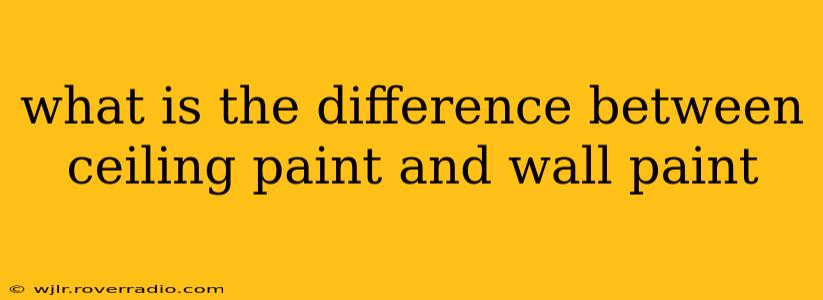What's the Difference Between Ceiling Paint and Wall Paint?
Choosing the right paint for your walls and ceiling can seem daunting, especially with the sheer variety available. While you can technically use wall paint on your ceiling and vice versa, there are key differences that make dedicated ceiling and wall paints better suited for their respective surfaces. Understanding these differences will ensure a long-lasting, beautiful finish.
This article delves into the key distinctions between ceiling and wall paints, addressing common questions and concerns. Let's explore what makes them unique and why choosing the correct paint is so important.
1. What are the key differences in the properties of ceiling and wall paint?
The primary difference lies in their formulation. Ceiling paints are typically designed to be more thin and watery, allowing for easier application and minimizing brushstrokes. This is crucial because ceilings are often large, expansive surfaces, and a thicker paint might lead to a streaky or uneven finish. They're also formulated to offer excellent hiding power to cover imperfections and previous paint colors effectively.
Wall paints, conversely, are often thicker and more durable. They're formulated to withstand more scrubbing and cleaning, as walls are more prone to scuffs, marks, and stains. They may offer a wider range of sheen levels, from matte to high-gloss, allowing for greater design flexibility. The sheen also affects washability; higher sheens are generally easier to clean.
2. Does ceiling paint have to be flat?
Not necessarily. While flat or matte ceiling paints are the most common, you can find ceiling paints with slightly higher sheens, such as eggshell or satin. However, higher sheens can accentuate imperfections on the ceiling, so flat or matte finishes remain the preferred choice for most ceilings. The crucial factor is that even higher-sheen ceiling paints will still be thinner and easier to apply than a comparable wall paint.
3. Is it OK to use wall paint on the ceiling?
While you can use wall paint on a ceiling, it's generally not recommended. The thicker consistency can make it difficult to apply evenly, potentially leading to an uneven finish with visible brushstrokes. Furthermore, the added weight of the thicker paint could increase the chance of it dripping or running before it dries.
4. Can I use ceiling paint on the walls?
Similarly, using ceiling paint on the walls is also not ideal. While it may go on smoothly, ceiling paint lacks the durability and washability of wall paint, making it more susceptible to damage from scrubbing or cleaning. Walls, being more exposed to everyday wear and tear, require a more robust finish.
5. What about the cost difference between ceiling and wall paint?
Generally, ceiling paint is slightly less expensive than wall paint. This is primarily due to the simpler formulation and often lower sheen levels. However, the price difference is usually minimal, and the benefits of using the appropriate paint for the surface far outweigh any small cost savings.
6. What are the best types of ceiling paint to use?
Consider these factors when choosing your ceiling paint:
- Finish: Flat or matte is generally best to minimize imperfections.
- VOC Content: Opt for low-VOC (volatile organic compound) paints for better indoor air quality.
- Stain-blocking properties: Helpful if you're covering up stains or blemishes.
Conclusion:
Choosing between ceiling paint and wall paint might seem like a small detail, but the right choice significantly impacts the final look and longevity of your paint job. While some overlap exists, using the appropriate paint for each surface ensures an even, smooth finish, optimized for durability and ease of application. Remember to always check the product label for specific application instructions and recommendations from the manufacturer.
